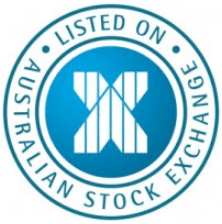
By Evan Lucas for Chris Weston, Chief Market Strategist at IG Markets
Asian trade dominated by China again
Weakness across the Asian region was broad bushed in morning trade, with no specific index or sector really able point to a reason for the slides. Leads from the US were soft as the flash manufacturing read came in below the medium consensus, but remained well above expansion as the Nasdaq was slammed with biotech stocks punished.
It was also interesting to note the slide on the CAC and the DAX in overnight trade, despite the fact France snapped out of 13- straight months of contraction in manufacturing and German manufacturing remaining in expansion for the ninth consecutive month. The figures did push the EUR north to that uncomfortably high level that gives Mario Draghi a headache. At $1.382 the EUR once again puts the variable inflation and deflation throughout the region on notice, and could see growth slowing once more.
Asia has seen little to really excite the markets, with most trading sideways. There are street rumours coming out of China that the PBoC is looking to drain ¥46 billion in the form of 28 day repos, with a rate of 4% in the very immediate future. Considering the fixing rate was once again moved higher to CNY6.1428 from CNY6.1452 yesterday, and CNY6.1475 on Friday, it has to be suggested that maybe the pair has turned a corner and maybe the PBoC is holding tight on its reform agenda to allow reasonable movements. Cash rates have stabilised and corporate demand for debt still remains; despite the events of the past few weeks this is a positive development.
The counter to this however is a former PBoC adviser stating clearly during an address that ‘China won’t repeat its ¥4 trillion stimulus program’, which may mean the PBoC might have to get inventive as to how it looks to stimulate domestic demand or moderate the volume of funds.
The most interesting developments from the market during the Asian session have come from commodities and currencies.
There has been relatively low news on the floors during the Asian session, yet over a 20 minute period the AUD moved through a 30 pip range from 0.91260 to 0.91564. Broker gossip suggests several large short stops were trigger at 0.9134, which tripped further stops at 0.9141 leading to a run on.
The Teflon-like nature of the AUD is very interesting, as there is a complete breakdown of fundamentals around the currency. So far this year iron ore has lost 19.6%, copper is off 14.3% and coal is down 15.8%; three of the four largest commodity exports from Australia. Yet AUD/USD is up 2.4% year-to-date and is touching three-month highs.
This does illustrate that domestic policies are decoupling the AUD from its traditional fundamental play as a commodity currency. However, those fundamentals may be still affecting the pair as iron ore futures skyrocket. The rebar futures have hit an intraday day record up move, adding 4% (previous record of 2.3%); the question then becomes is the earlier stimulus from infrastructure projects already taking effect?
Gold is the other major development losing 2% overnight and it continues to breakdown. The precious metal moved through the key resistance level of US$1320 an ounce with relative ease, despite the fact that the USD saw weakness overnight and China growth concerns were raised. Gold is facing headwinds from the improvement in environments across the US economic spectrum and the dying down of the Crimean crisis; the relief rally looks over and the next level at US$1300 an ounce looks firmly in bear traders’ sights.
Turning to trade in Europe tonight and all eyes remain fixed on CPI with the release of core CPI in the UK. With Mark Carney categorically turning the rate cut switch off, sign of inflation will see the GBP higher against most major pairs, as the UK could become the second G10 economy to move on rates post the GFC.